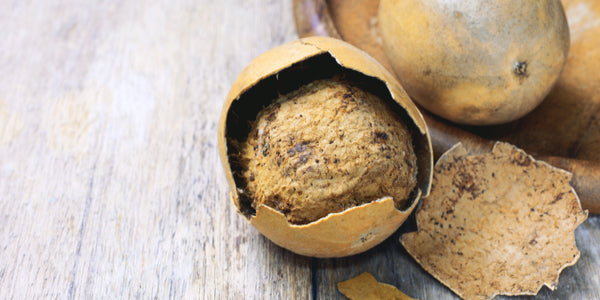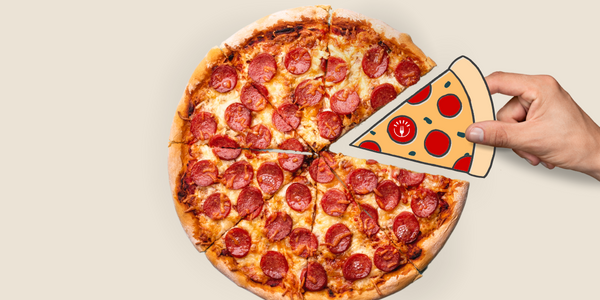
As more people recognize and feel the impacts of highly refined sugar and sugar derivatives like high fructose syrup, more low-calorie, artificial, and natural sweeteners emerge. Newer to the market, monk fruit is spilling its secret as another natural sweetener.
But what is monk fruit and what are the health claims that designate it superior to sugar? This article will explore them plus alternative uses and much more!
What Is Monk Fruit?
Also known as lo han guo to its native eaters in China, monk fruit is a small green melon frequently utilized in Eastern medicine as a cold and digestive aid. Removing the seeds and skin of the fruit, crushing it, and then collecting the juice transforms the solid fruit into a zero-calorie, sugar-like substance that provides natural sweetness.
Mogrosides are the specific compounds that give monk fruit their sweet flavor and allow it to travel through the body undigested. Meaning, they do not contribute any caloric value, nor do they raise blood sugar levels.
So rather than being absorbed in the upper gastrointestinal tract like most food, mogrosides travel to the colon. Gut microbes use the glucose molecules for energy while the rest is excreted through the urinary system.
Is Monk Fruit Safe?
The Food and Drug Administration (FDA) deems monk fruit "generally recognized as safe" for everyone, including pregnant and breastfeeding women and persons with diabetes.
However, because of its newness within the mainstream, it can be difficult to find at regular supermarkets. Often, only the shelves of Asain Markets carry the imported monk fruit sweetener, although purchasing it online may be a more viable option nowadays.
How Does Monk Fruit Compare to Sugar?
Comparatively, monk fruit extract is nearly 150 to 200 times sweeter than sugar. This is especially important to note for baking, as a lot less of the fruit is needed to achieve the sweet taste of regular table sugar. For example, a recipe that calls for 1/2 cup of sugar might only need 1 to 2 packets of monk fruit to sweeten it.
Additionally, according to the American Heart Association, men should aim to consume less than nine teaspoons of sugar per day and women, less than six. But due to studies showing no adverse effects of monk fruit sweetener, no upper limit or acceptable daily intake exists. Thus, regarding the nutritive value of sugar versus monk fruit, it is plausible to suggest the fruit sweetener is healthier, or at least, less detrimental to health than sugar.
In terms of energy, one teaspoon of sugar supplies sixteen calories while any amount of monk fruit provides zero calories. So, folks looking to slash calories or carbs would benefit from replacing sugar with a sweetener such as monk fruit.
Potential Benefits of Monk Fruit
Although most often used as a sugar substitute sweetener, it has been used in Traditional Chinese Medicine (TCM) for centuries to forge hot drinks that soothe sore throats and reduce phlegm. Other cited uses include lubricating and cooling the lungs, dissolving nodules, minimizing swollen glands, and lubricating the intestines to relieve constipation.
One source also claims monk fruit is potentially antioxidative, anticarcinogenic, and helps prevent diabetic complications, therefore implying its use as a preventative plant compound. Due to its non-calorie value, it may assist in weight loss when included in a balanced diet.
Furthermore, those inclined to spirituality suggest using monk fruit plants for yin and yang balance, a key health concept of TCM (Meandqi), where yin is cool in nature and yang warm. Since monk fruit plants are cool, they help those struggling with yin deficiency or an overheated body.
How to Use
Monk fruit sweeteners are most frequently used to sweeten foods and beverages such as coffee, teas, oatmeal, sauces, smoothies, frostings, yogurt, and even homemade sodas! It is quite versatile, deeming it a probable pantry staple in the future.
Because it is stable at high temperatures, monk fruit sweeteners are also frequently used in baked goods like bread, muffins, cakes, and cookies. However, it is important to note that baked goods may taste or look slightly different than a version with regular sugar because sugar contributes to the structure and texture of foods. Expect baked goods composed of the fruit to be denser and less risen.
Test out baking with this low-calorie fruit yourself by trying these classic, sugar-free chocolate chip cookies!
Ingredients:
• 1/2 cup butter, softened, not melted
• 1/4 cup coconut oil, melted
• 1/3 cup Lakanto monk fruit sweetener
• 1/4 cup Lakanto brown monk fruit sweetener
• 1 egg
• 1 tsp vanilla extract
• 1/2 tsp almond extract
• 2 cups almond flour
• 1/2 tsp baking soda
• 1/2 tsp Pink Himalayan sea salt
• 3/4 to 1 cup Lily's dark chocolate chips
• 1 to 2 Tbsp coconut flour (OPTIONAL) - only if you want them fluffier
Instructions:
1. Preheat the oven to 350°F and grease the cookie sheet (if needed).
2. In a medium bowl, add butter and coconut oil. Beat with a hand mixer until combined. If the butter is not softened, use the warm melted coconut oil to help soften it.
3. Add monk fruit, egg, vanilla, and almond to the creamed butter mixture and combine further with a hand beater. You can also add the optional coconut flour here as well.
4. In a separate medium bowl, combine almond flour, baking soda, and salt and mix well.
5. Add butter mixture to almond flour mixture and mix well with hand beater.
6. Lastly, add chocolate chips and finish mixing.
7. Roll chocolate chip cookie dough into small balls and line the baking sheet.
8. Bake for 9 to 11 minutes and let cool on the counter.
The Bottom Line
Like most new mainstream food products and diet trends, more research is needed to determine the effects of monk fruit on health implications. Yet, the available research points to monk fruit sweetener as a safe, calorie-free alternative to sugar at this point.
Requiring less to achieve the same level of sweetness of sugar, it is frequently used in warm drinks, hot cereals, and baked goods. And because it is calorie and carb-free, it can be especially useful for those looking to cut calories or try a lower-carb eating approach and for diabetics.
As always, consult a health professional to determine its effectiveness for specific health goals!
References:
Food Insight. Everything you need to know about monk fruit sweeteners – food insight. Foodinsight.org. Published December 18, 2018. http://foodinsight.org/everything-you-need-to-know-about-monk-fruit-sweeteners/.
McDermott A. Monk fruit: Benefits and risks. Healthline.com. Published February 3, 2017. http://www.healthline.com/health/food-nutrition/monk-fruit-health-benefits.
Monk fruits. Meandqi.com. http://www.meandqi.com/herb-database/monk-fruit.







